The one with Skull Man.
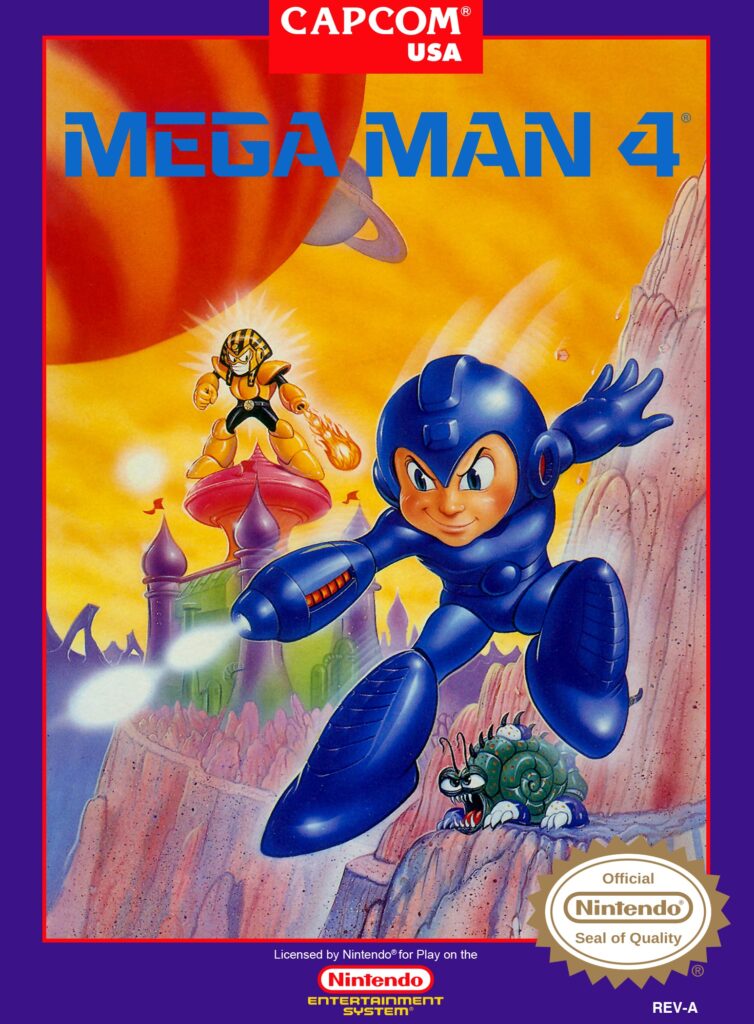
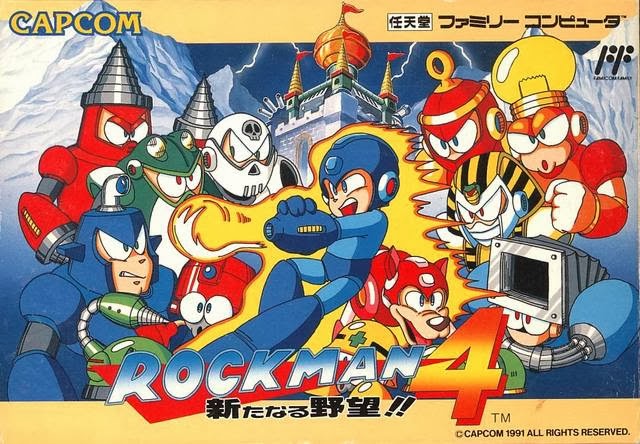
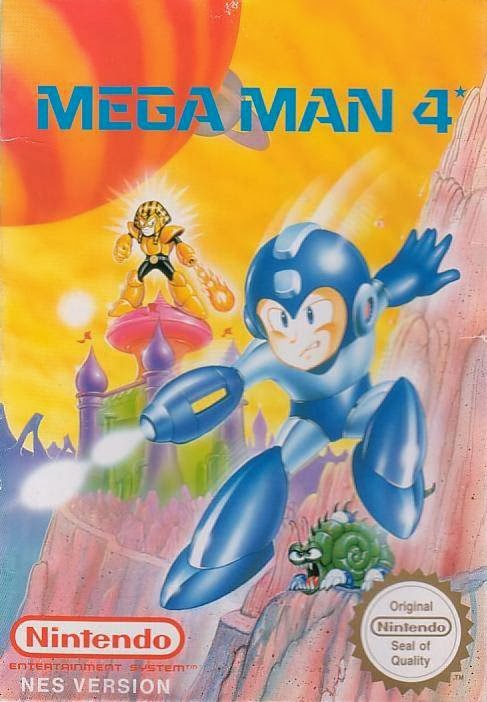
PLAYERS: 1
PUBLISHER: Capcom
DEVELOPER: Capcom
GENRE: Action
RELEASE DATE: January 1992
Mega Man 4 begins and ends with Mega Man riding atop a train, helmet off, wind caressing his blue/black hair. There’s no explanation within the game as to why Mega Man is taking a train. Does it symbolize anything or does Mega Man’s mop top just look cooler with a breeze blowing through it? Personally, I believe that he’s riding to Dr. Cossack’s lair. Since Dr. Cossack is Russian, Mega Man is likely traveling in the former Soviet Union (the Union collapsed the month this game was released in Japan). I’m no expert on the Russian land, but I would imagine that, outside the larger cities like Moscow and St. Petersburg, it could be potentially hard to drive a car or even a flight vehicle, given harsh weather and undeveloped roads. A train might be the only way Mega Man can access Cossack. After the game is over, Mega Man returns back home to Dr. Light’s lab, perhaps on the same train that took him there. He has grown attached to them, because they are, much like he is, a mechanical machine built for a good purpose. As long as someone keeps them fueled, they will continue to run – and have meaning.
It’s hard to fully dislike a Mega Man game, as they all essentially have the same formula, but Mega Man 4 is certainly one of the lesser entries on the NES. For the first time since the series began, it felt like Capcom was resting on their laurels. While the stage design remains solid, the boss design and the music seem underdeveloped. Dust Man? Ring Man? Dive Man? What in the world, Capcom? According to the “Mega Man: Official Complete Works” book by Udon (and in all honesty, Wikipedia, who sources the book), the Robot Masters selected for the game was the result of a design contest that took place in Japan. There were over 70,000 submissions. 70,000! How did Drill Man or Bright Man or Dive Man beat out 69,991 other submissions?! Sorry to rant, but it boggles the mind. Mega Man 4 also introduced the extremely controversial Mega Buster. It’s a charge technique for Mega Man’s Plasma Cannon, allowing him to release more powerful regular shots. Many reviewers and players found that it lessened the difficulty, but I actually found 4 to be the hardest behind the original. The stages were pretty easy to breeze through, but the bosses – particularly the Wily battles – were quite challenging, with the Buster or without. For me, the Buster was best used on the larger enemies, like the Snail or the Levitating Pair of Eyes. The other new and adorable addition to this game is Eddie, the tiny red robot that shows up simply to give you an item. You never know what he’s going to give you, but more often than not, it’s something good. Even if it’s not, he’s too darn cute to hate. Other than those two new additions, Mega Man 4 plays exactly like the other games, sans the inspiration of Mega Man 2 and Mega Man 3.
The cinema scene gives you a brief recap of the last three games – Wily threatens Earth, Mega Man defeats him, hooray! – before explaining Mega Man’s new mission: to defeat Dr. Cossack. I love the title screen. A spotlight shines down on Mega Man’s unworn helmet. It’s an amazing image that’s, frankly, too significant to be in Mega Man 4. Think back to the mournful opening theme of Mega Man 3: that’s where this helmet belongs. Now listen to this particular title theme. The composer, Minae Fujii, tries to cram too many notes in this piece, yet fails to evoke emotions. The theme starts out solemn, somber, transitions, sounds briefly epic, then transitions and ends. Aside from the helmet, a waste of an opening.
THE BOSSES
As you may have gathered, I’m not a huge fan of the bosses in this game. Many of their designs are clunky and strange (Toad Man reminds me a lot of Air Man, while Dive Man is Hard Man with a spout attached), while a scant couple, like Skull Man and Pharoah Man, are still pretty cool. The order I beat them in for this go-round: Toad Man, Bright Man, Pharoah Man, Ring Man, Dust Man, Skull Man, Dive Man, Drill Man.
Toad Man’s claim to fame has to be the rad graphics throughout his stage. The dark, stormy night as the stage begins and the flowing water throughout the sewers are both rendered extremely well. The stage looks cold and brutal, but it’s one of the best stages in the game. The music too is some of the best. It’s one of the few stages that even tries to drink from the well of enchanting melodies of the previous two games. Toad Man himself is incredibly easy. While he has an acid rain attack, his typical modus operandi is to jump if he’s near you. A phat ton of Mega Buster should do the trick and reward you with his weapon, the sounds-like-a-rejected-scented-spray-name, the Rain Flush.
Bright Man’s bulbous light bulb head and go-get-em mindset doesn’t prevent him from being a relatively dumb boss. His stage is a treat, though. Riding grasshoppers across a bed of spikes while shooting totem poles is my idea of a good time. The design is your typical Mega Man science-y stage, with electrical lines coursing through cylindrical light bulbs around the entire stage. The music’s mechanically catchy, but somewhat hollow – it feels like it was constructed of little pieces from previous stages. Aside from Bright Man’s freeze attack, all he does is jump a lot, like Toad Man, and occasionally spit out a couple plasma bullets. A solid Rain Flush treatment will wipe the bright right out of him.
Ah yes, his eminence. Pharaoh Man looks as evil and powerful as one would hope. His stage is an underground sand museum, with rows of spikes, bats, and robotic mummies that fling their heads at you (do you remember the first time you saw one of those things? Terrifying…).There’s a special Wire accessory you can acquire by taking a hidden path along the sinking sand. It’s cool, but not necessary to complete the game. The music has promise, but much like the opening intro theme, tries to cram about four musical directions into one theme and fails. It sounds harsh, I know, and I really don’t hate the music for this stage or Bright Man’s, for that matter. It just sounds like the work of a young composer, trying to hard to impress his elders. There’s no restraint, and while that can work in a musician’s favor at times, Mega Man’s themes have always been about the juxtaposition of two moods: melancholy and determination. That’s not to say the themes can’t and shouldn’t grow, but the growth has to be organic, not forced. But I digress. Pharaoh Man is deprived of his crown quickly, no thanks to the Flash Stopper, a machine that freezes time, yet still allowing you to shoot. Such a shameful end to an awesome boss.
Do you, Mega Man, accept Ring Man as one of the eight bosses presented to you in Mega Man 4? Speak now or forever hold your peace. Well… it could be worse, I suppose. How do you make a stage based around the concept of a ring? If you’re Capcom, you say screw it and construct a stage with prismic platforms and Gargantuan Hippos with missiles and all sorts of crazy crap. The stage is futuristic Mega Man at his finest, and it makes little to no sense. There is a bit of a haunting echo in the bridge of the theme that’s quite agreeable to my ears, but other than that, the music is Mega Man-by-numbers. Finally, Ring Man tosses his Ring Boomerang at you (::stifles guffaw::), but he is no match for a few charged Pharaoh Shots. Hey, even Ring Man has to hail to the king.
Dust Man’s entire stage is made of robot scraps, and that’s as visually unappealing as it sounds. This is certainly one of the uglier and more annoying stages of the bunch (only the furnace of burning metal towards the end looks legit). Little bombs will come up from pits as you jump over them, leading to many a demise, and at one point, the entire stage turns into a trash compactor and tries to squish Mega Man amidst the rest of the scrap heap. Clever, sure, and most definitely annoying. Dust Man throws dust cubes at you, but why worry when you’re packing the Ring Boomerang (*chortles*)? After he’s gone, don’t forget to brush the dirt off your shoulders. (obviously, the player in the video is not abiding by my boss order – skip to around 2:30 to see Dust Man’s stage).
Say what you will about skulls and bones being misused as symbols for nefarious groups/gangs: they still look rad. Setting Skull Man’s stage in a “Robosaur Boneyard” (Capcom’s brilliant wording, not mine) is another stroke of genius. While the stage never gets radically difficult – there are no large enemies, no long stretches of spikes or precarious platforming – it feels as though it could fall apart at any second, and the luscious shades of purple and red throughout are a sight to behold. Too bad the theme starts out promising, but never gets off the ground. If any stage could use a fantastic theme, it’s this one. Skull Man doesn’t fluff around, but he can’t handle dust in his bones. The Dust Crusher is your ticket out of the boneyard, and a few well placed cubes should crumple him completely.
Ugh, Dive Man. What a disgrace (man). At least your Sea Base is crawling with challenge. Moby Dick’s got nothing on a whale that shoots out napalm bombs, and those Spiked Jellyfish Creatures aren’t anything to laugh at, either. There’s another special accessory you can get at the bottom of an unassuming pit. It’s a balloon that allows you to stand in mid-air. Like the other one, it’s a neat feature, but mostly unnecessary. Lots of nasty little jumps in low-gravity water will ensure some swearing, but you’ll reach Dive Man in no time, and when you do, equip that Skull Barrier for me, would ya? That jerk attacks you like he doesn’t want to live anymore, which is good. A few hits with some Skulls and his underwater grave is permanently sealed.
One of the best, if not most consistent musical themes, kicks off the final boss stage and purveyor of all things drill-related, Drill Man. Finally, Fujii-san finds the right balance of mournful dedication in the melody, while leaving in a couple transitions that mark the piece as his own. The Ore Mines that make up Drill Man’s base of operations is relatively bland and uninteresting (who likes the color salmon? Anyone?), save for one section involving non-stop falling trash, and jumping on switches to make the ground appear. Once that’s over and done with, Drill Man points at you with his naughty (drill) bits and the battle is afoot. Too bad he didn’t count on the power of Mega Man’s jumping war cry, and of course, Dive Man’s Dive Missile. A few of those puppies would explode any drill head foolish enough to tackle them.
DR. COSSACK’S CITADEL
Look at that lightning! Look at Cossack’s Citadel of nightmares! This stage, in particular, is a slippery customer. Ice is everywhere, as is Capcom’s most unimpressive enemy ever, the Slinky. The Russian-inspired theme is very fitting, though. Also, it’s always cool to start a stage in the day, and climb higher and have it turn into night. Mothraya is your first boss, and an uneventful one at that. Would you kindly slap it with the Ring Boomerang?
This stage is an indoor affair, and coincidentally, you’ll be using a lot of the Rush’n Jet (dear God, please stop my horrible puns/jokes, amen). Beds and blocks and enemies of spikes are on the menu, while space watches you from Cossack’s evil windows. The green/purple color combo for this stage is particularly pretty, despite being Joker-esque. The Square Machine, a large constantly moving entity (just watch the video), needs to be “dusted” out of commission, if you know what I mean.
And for the first time ever, ladies and gentleman, a Mega Man stage that moves on its own. It’s not as masochistic as it sounds, thankfully. Just some well-timed jumps and avoiding projectiles, the usual. This stage is about as easy as they come, and the Cockroach Twins, mechanical spiders that walk all around the walls (yeah, definitely not cockroaches), are easily defeated with some om-nom drill bits.
Dr. Cossack’s last stand? Dah, comrades. Mega Man’s in some kind of space base and it seems every enemy that’s made an appearance throughout the game is trying to attack him. The stage has quite the rip-roaring theme. It’s a bit all over the place, but the bass part – which stands completely separate from the melody – is scrumptious and completely makes the song. Dr. Cossack appears with coke-bottle glasses, a beard, and a snide look. His claw machine attachment is downright silly, and some dust cubes will make short work of him… but wait. Turns out Dr. Wily has been behind Cossack all along, kidnapping his daughter in order to control him. Protoman releases Kalinka (?!), re-uniting the family, and Wily appears, cursing Protoman’s name and vowing to “break” Mega Man, despite the fact that he’s 0 for 3. Hubris and large eyebrows do strange things to a person.
DR. WILY’S CASTLE
As if I wanted to write any more or you read any more, here we go again, with another castle. Stage 1 is your stereotypical Wily construction, with plenty of Metools to impede your progress. Outside of a spikey water section, there’s absolutely nothing to concern you here. The boss is a giant Metool that looks awesome and goes down quick with the Ring Boomerang (*snickers*).
This Prince-themed purple affair doesn’t do much to challenge the Blue Bomber. Two castles really feels like too much, and I get the sense that Capcom was feeling pretty tired by this point. How many more of the same enemies can they throw at you, or for that matter, what stage designs that don’t feel like rehashes? Stage 2 – like Wily’s Castle as a whole – is competent, but completely uneventful. The Tako Trash is the boss, a larger version of that red creature that spews out projectiles from both his mouth and head. Again with the Ring Boomerang (*chokes*) and that’s that.
Stage 3 is the obligatory beat-every-boss-again-because-we-feel-like-it stage. Once you prove your point the second time, it’s time to challenge Wily and his amazing Skull Head Machine. The first part of the battle is incredibly easy, if you stand almost directly underneath the head. You can completely avoid its projectiles, charge your Mega Buster, and hit the thing, leaving you unscathed. The second part – the skull explodes and there’s Wily! – is a bit trickier. Wily encroaches on your space, like a nasty old man, leaving you no other chance than to thrust your drill bits in his old, wrinkly face. He’ll explode, fly away…
But he’s not dead, oh heavens, no. This actually might be my favorite Wily boss battle out of all the games. I love that he’s completely hidden in the dark until the light projectile – his own weapon – briefly gives him away. It’s enough time to get a charged Pharaoh Shot or five on him, and he’s toast.
He gets down on his knees, as per usual, but this time, he escapes in his Wily Mobile, leaving Mega Man to get out of his castle before it explodes. Mega Man escapes, of course, and gets on the train. A symphony of colors (and surprisingly moving music) plays in the background, as the train moves through the Russian countryside, the city, and finally, to Dr. Light’s cottage and lab. As always, he’s happy to be home.
Mega Man 4 might not hold up to the previous three, but I’m not surprised that Capcom didn’t hit greatness this time around. This was the fourth game in almost as many years. Considering Mega Man 5 came out later in 1992 – the same year as Mega Man 4!– it’s almost as though Capcom was holding their own head underwater in order to finish the final three games before the demise of the NES. Perhaps Capcom tried to complete Mega Man 4 with the same drive and passion as they did for the other games, but a key element – let’s call it “heart,” as cliche as that is – feels lost in translation here. Still, for Mega Man 4 to be as fun as it is to play, and still disappoint, speaks to how great this first batch of original Mega Man games were. After 2 and 3, fans expected every Mega Man game to be great. After 4, they settled for less or moved on.
B
Thanks as always to GameFAQS.com, MegaMan NG for his stupendous videos, and megamanwikia.com
Latest posts by Dylan Cornelius (see all)
- By Request – New Ghostbusters II - April 4, 2014
- The 86 Worst NES Games – Part 4 - April 1, 2014
- The 86 Worst NES Games – Part 3 - March 29, 2014
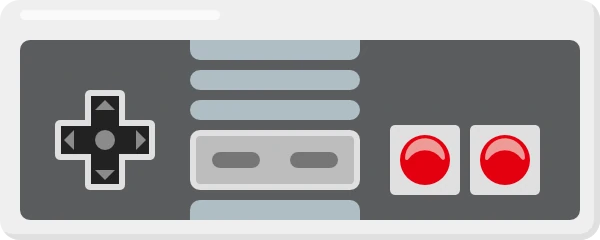
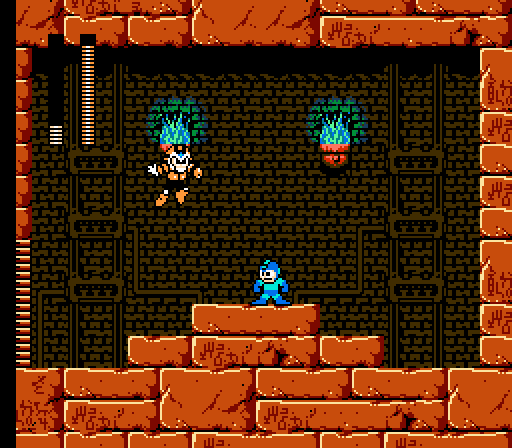
5 replies on “#404 – Mega Man 4”
I think the funniest thing about the whole series thus far (barring your barrage of PUNishment for this post) has to be the poses struck by the bosses. They’re what make ME snicker and chortle.
It also occurred to me that MM and Wily’s relationship is much like Bats and Joker’s: No killing allowed.
Yeah, it never really dawned on me how awkward some of the box art really was. Tremendous review and only 2 left! Then Action 52! Kidding, no way ANYONE could go from all 6 Megamans right into the poo-swamp of the NES =P
I think what annoys me the most about the mega buster is the fact that, while I have fond memories of many of the tunes from 2 & 3, for the next three games I just have memories of that charging sound effect. Also, my thumb gets tired from holding down the button all the time.
I actually think this one’s underrated. I don’t think Bright Man or Dive Man are as cheesy/lame as Top Man (seriously, what kind of weapon is this?) or Snake Man (attacking you with something resembling sperm cells). I also like many of the bosses from the fortresses. Well, de gustibus non est disputandum, but at least I second your opinion that MM5 is the one that ALMOST sucks. 😉
Oh, and I don’t understand all the Mega Buster moaning. Don’t like it? Don’t use it then, what’s the problem?
I love Megaman 4. I don’t get all the hate it gets. I love The music especially.